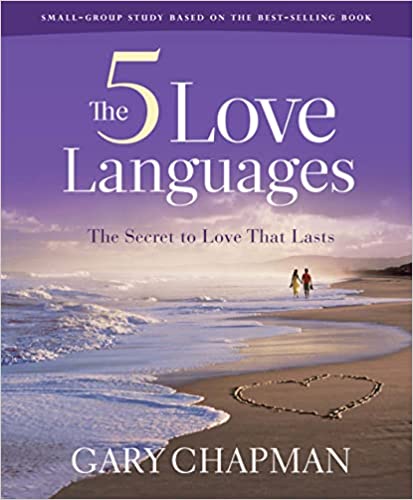What Are The 5 Love Languages? The List, Pros & Cons



Wondering what are The 5 Love Languages and how this concept might apply to yourself and your own relationships?
Since my latest post about The 7 Types of Love and What They Mean was so popular, I want to dive into The 5 Love Languages List and give you the pros and cons of the framework.
This article covers the five love languages and my opinion of the pros and cons the book and theory have to offer.
As with any theory or framework, it is important to use it as a guide rather than a strict set of rules and to adapt it to fit your own unique experiences and needs. The 5 Love Languages framework is a great place to start learning how to relate to your partner and give & receive love.
Before we get into the nuances, pros, and cons, let’s talk about what are the 5 Love Languages.
Developed by Dr. Gary Chapman, the concept of Five Love Languages is a framework that helps individuals understand their unique way of giving and receiving love. The book is mostly focused on romantic relationships but can apply to other types of love as well.
Chapman suggests that couples can improve their relationships by learning their own Love Language and their partner’s Love Language, then making an effort to speak each other’s language.
List of The Five Love Languages
- Words of Affirmation
- Acts of Service
- Receiving Gifts
- Quality Time
- Physical Touch
However, it’s important to learn about each of the love languages because you may not understand their deeper meanings at first glance.

It’s also worth mentioning that one love language is not superior to the others! Meaning, that they all have equal intrinsic value and one is not better than the other. It’s all about your own personal preferences.
The 5 Love Languages List
Here are short explanations of each of The 5 Love Languages:
1. Words of Affirmation
Words of Affirmation are one of the Five Love Languages that involve using words to express love and appreciation.
Individuals who value Words of Affirmation feel loved and appreciated when they receive compliments, encouragement, and kind words from their partner. They need to hear comments like “I love you,” “You mean the world to me,” and “I am proud of you.” These words have the power to build up their self-esteem and make them feel secure in their relationship.
2. Acts of Service
Acts of Service is another Love Language that involves doing things for your partner to show your love and care.
People who value Acts of Service feel loved and appreciated when their partner does things like cooking a meal, doing the dishes, or picking up the house, or taking the kids out for a walk to help get their energy out. These small acts of help, especially when they feel overwhelmed, can go a long way in making the person feel loved and valued.

3. Receiving Gifts
Receiving Gifts is a Love Language that involves giving and receiving tangible gifts.
People who value Receiving Gifts feel loved and appreciated when their partner gives them thoughtful gifts, no matter how small or big. It’s not about the cost of the gift, but the thoughtfulness of the gift. These gifts are not just material possessions but a symbol of love and thoughtfulness to a person with this love language.
4. Quality Time
Quality Time is a Love Language that involves spending time with your partner and giving them your (mostly) undivided attention.
People who value Quality Time feel loved and appreciated when their partner takes the time to listen to them, engage in meaningful conversations, and participate in activities together. It is not just about being physically present but also about being emotionally present and connecting with each other. For example, going on a picnic date, a walk after dinner, a drive up the coast or simply sitting down to watch a movie together can all represent quality time together.
5. Physical Touch
All humans need physical touch for healthy regulation, so it’s important to not confuse this one with a fundamental need (which is one of my criticisms you’ll read below). Physical Touch is a Love Language that involves using physical touch to express love and care.

People who value Physical Touch feel loved and appreciated when their partner holds their hand, hugs them, kisses them, or cuddles with them. Physical touch is a powerful way of expressing love and can make individuals feel secure and connected in their relationships. Some people like to be touched more or less than others, so this is an important aspect to discuss with your partner.
Primary & Secondary Love Languages & Quiz
In the Love Language framework, your primary love language refers to the love language that you prefer to receive love in the most. It is the love language that makes you feel the most loved, valued, and appreciated.
Your secondary love language refers to the love language that you prefer to receive love in when your primary love language is not available or when you want to feel love in a different way. It is still important to use the primary love language as much as possible, but using the secondary love language can also help the person feel loved and appreciated.
If you’re new to The 5 Love Languages, you may read the list and know exactly which is your Primary Love Language and which is your Secondary. Or, you may need to learn more about the framework to identify how you prefer to receive love.
You can take the love languages quiz in the book or on the love languages website to identify your primary and secondary love languages.
Pros of The Framework
The framework and book both offer an excellent place for people to start, especially if they are not familiar with couples counseling or relationship therapy.
Two Examples of The Love Languages in Action
Here are two real examples of how The Love Langues are helpful:
- A friend told me once that he always gave his wife a big expensive bouquet of flowers on her birthday. He planned weeks ahead and even called to make sure the ribbon was her favorite color. But, she never seemed overly joyed with the flowers. Then, she read the book and realized that her Primary Love Language was Acts of Service. He stopped giving her flowers and did the dishes and made breakfast for her birthday, and she was over the moon happy that day! This is a great example of how this book can help. (Sidenote: Yes I agree that both partners should help out. This couple had an arrangement (their business not mine!) that she does the cooking and cleaning while he works. It wasn’t about him doing the dishes, it was the Act of Service that made her feel loved.)
- From my own personal perspective, I actually apply this to my mom. My mom loves to give me gifts. She is always giving me a physical gift, big or small. As I got older, I’d say, “Mom, please, can buy my own things. I really don’t need this!” Sometimes, I’d even be annoyed. Then I realized that my mom’s Primary Love Language is Gifts! She shows love by giving gifts. I now appreciate her gifts in a better way.
The book is relatively short and easy to read and can offer wonderful steps to help people form strong relationships. It can also help people understand what is important to their partner, which is critical in the long-term health of relationships.
Criticism of The Love Languages
While the Five Love Languages theory has gained widespread popularity and has helped many individuals and couples improve their relationships, it is not without criticism.
I like to look at the framework of The 5 Love Languages as another tool in my mental health toolbox. I don’t think that the framework is all-encompassing. Here are a few critiques of the theory:
We All Need Physical Touch
While physical touch is not considered a basic need for survival like food or water, it is still an important aspect of human nature and is crucial for emotional and psychological well-being, not simply a “Love Language” that some people may not prioritize.
A study published in the Journal of Behavioral Medicine found that participants who received hugs from their partners had lower levels of the stress hormone cortisol compared to those who did not receive hugs. Physical touches, such as hugs, cuddling, or holding hands, can have a positive impact on mood, reduce stress levels, and increase feelings of social support and connection. Studies have also linked touch deprivation to negative outcomes, including anxiety, depression, and social isolation.
Moreover, physical touch plays an important role in human development, particularly in infants and children. Touch is a crucial component of bonding between caregivers and children, and can impact cognitive, emotional, and social development.
All 5 Are Important Because We All Change
While I do think there is merit in the framework, I think that ultimately all five love languages are important in healthy relationships. Plus, people grow and change over time. I think it’s quite possible that our preferences to give and receive love will change, too.
Do I Recommend the Book?
Yes, ultimately I recommend The 5 Love Languages book because think it’s a good starting place and a great tool in your relationship toolbox.

The book offers insights, examples, and practical advice for how to identify and express each Love Language, as well as how to overcome common obstacles that can arise in relationships. The book’s main message is that by learning to speak each other’s Love Language, couples can create stronger, more fulfilling relationships based on understanding, respect, and love.
The bottom line: Understanding the Five Love Languages can be a way to help individuals communicate their love and care more effectively, and understand how to help their partner feel seen and heard. It is important to remember that everyone has a unique way of giving and receiving love. It’s up to us to learn and adapt to these differences to build strong and fulfilling relationships.
Want to read more about love? Check out The 7 Types of Love (and What They Mean) >




